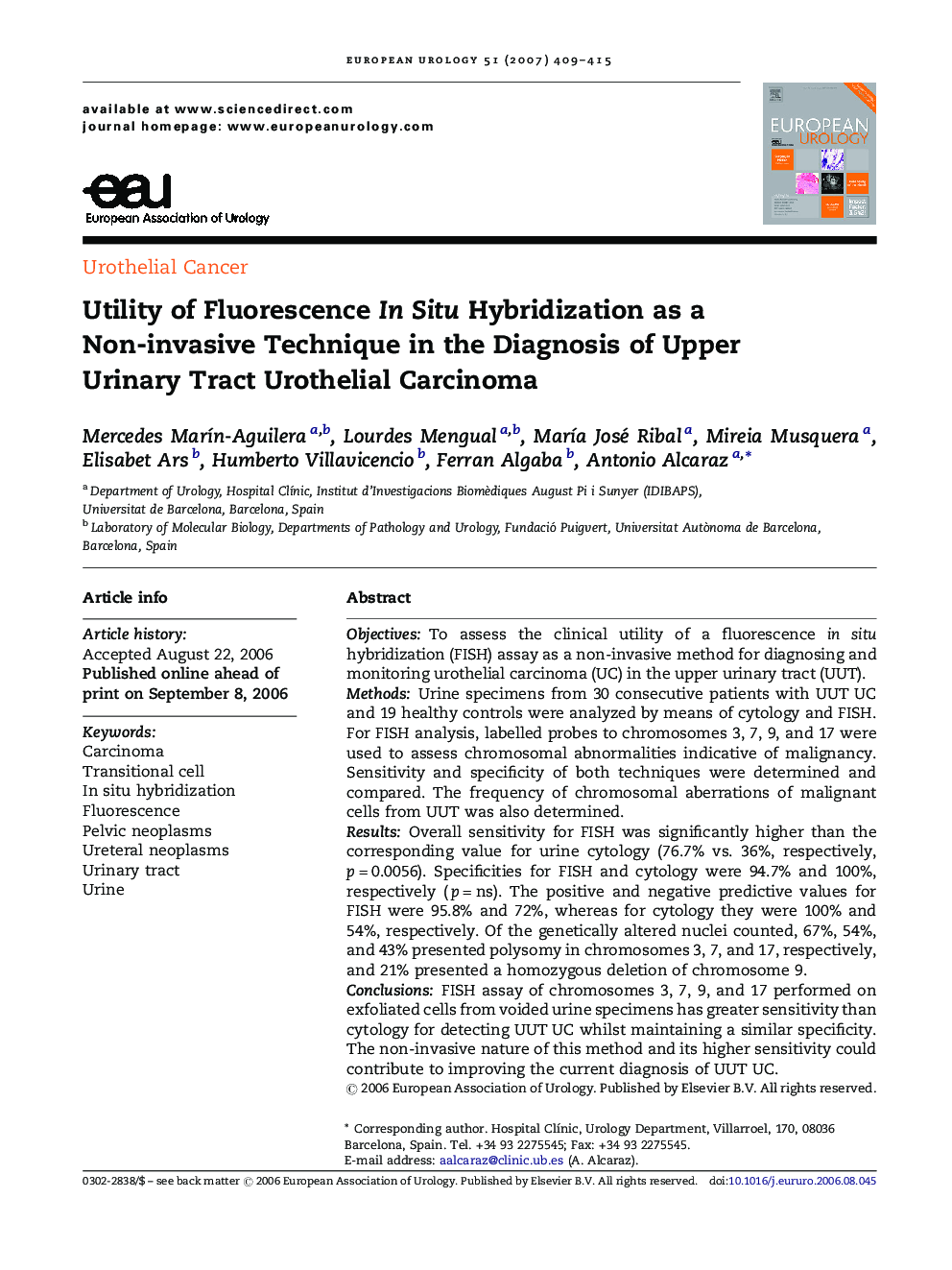| Article ID | Journal | Published Year | Pages | File Type |
|---|---|---|---|---|
| 3928908 | European Urology | 2007 | 7 Pages |
ObjectivesTo assess the clinical utility of a fluorescence in situ hybridization (FISH) assay as a non-invasive method for diagnosing and monitoring urothelial carcinoma (UC) in the upper urinary tract (UUT).MethodsUrine specimens from 30 consecutive patients with UUT UC and 19 healthy controls were analyzed by means of cytology and FISH. For FISH analysis, labelled probes to chromosomes 3, 7, 9, and 17 were used to assess chromosomal abnormalities indicative of malignancy. Sensitivity and specificity of both techniques were determined and compared. The frequency of chromosomal aberrations of malignant cells from UUT was also determined.ResultsOverall sensitivity for FISH was significantly higher than the corresponding value for urine cytology (76.7% vs. 36%, respectively, p = 0.0056). Specificities for FISH and cytology were 94.7% and 100%, respectively (p = ns). The positive and negative predictive values for FISH were 95.8% and 72%, whereas for cytology they were 100% and 54%, respectively. Of the genetically altered nuclei counted, 67%, 54%, and 43% presented polysomy in chromosomes 3, 7, and 17, respectively, and 21% presented a homozygous deletion of chromosome 9.ConclusionsFISH assay of chromosomes 3, 7, 9, and 17 performed on exfoliated cells from voided urine specimens has greater sensitivity than cytology for detecting UUT UC whilst maintaining a similar specificity. The non-invasive nature of this method and its higher sensitivity could contribute to improving the current diagnosis of UUT UC.
